Simulation and Analysis of an FMCW Radar against the UWB EMP Coupling Responses on the Wires
Abstract
:1. Introduction
2. Relevant Theory
2.1. The Coupling Theory
- is the coupling power of receiving antenna;
- is the gain of the transmitting antenna;
- is the gain of receiving antenna;
- is the working wavelength of receiving antenna;
- is the bandwidth of receiving antenna;
- is the target range between the UWB EMP and the antenna;
- is the bandwidth of the transmitting antenna of UWB EMP;
- is the loss factor in the coupling process.
2.2. Ranging Principle of the FMCW Radar
- is the difference frequency;
- is the modulation bandwidth;
- is the speed of light;
- is the modulation period;
- is the carrier frequency;
- is the velocity of the FMCW radar.
3. The Hybrid Model
3.1. The Flowchart
3.2. The Field Model
3.2.1. The Simplified Model of the FMCW Radar
3.2.2. Simulation Setup
3.3. The Circuit Model
3.3.1. The Composition of the FMCW Radar
3.3.2. The Verification of the Circuit Model
4. Results and Analysis
4.1. Field Simulation Results and Analysis
4.1.1. The Impact of the Wire Types
4.1.2. The Impact of Wire Lengths
4.1.3. The Impact of the Conductor Radius
4.1.4. The Impact of the Curvature
4.1.5. The Impact of the Wire Numbers
4.1.6. The Impact of Line Spacing
4.2. Circuit Simulation Results and Analysis
- (1)
- Injection of EMI at node 5;
- (2)
- Injection of EMI at node 6;
- (3)
- Injection of EMI at nodes 5 and 6.
4.2.1. Single-Point Injection
4.2.2. Two-Point Injection
4.2.3. The Analysis of EMI Amplification and Peak Voltage of IF Output
5. Discussion
6. Conclusions
- (1)
- UWB EMP may cause FMCW radar damage via wire coupling responses. The type, length, radius, curvature, number, and line spacing of metal wires will have an impact on the wire coupling responses, but the type of wire connections has the greatest impact on them. Under the same state, the coupling responses on a single wire are 22,000 times those on a coaxial wire. Due to the existence of crosstalk voltage between wires, it is best to bundle the multiple metal wires in the radar.
- (2)
- The EMI source can actually affect the spectral peak of the IF output. The main reason is that the UWB EMP covers a wide spectrum range. During high-power injection, it will lead to the spectral peak shift of the IF output signal, resulting in the false control signal output by the radar.
- (3)
- To effectively protect the radar from UWB EMP interference, the protection at the IF signal output shall be strengthened, a transmission wire with better shielding performance shall be selected, and the length of the transmission wire shall be shortened as far as possible.
Author Contributions
Funding
Data Availability Statement
Conflicts of Interest
References
- Jiang, H.; Zhang, L.; Wang, K.; Guo, Y.; Yan, F.; Ji, X. Vehicle classification applying many-to-one input network architecture in 77-GHz FMCW radar. IET Radar Sonar Navig. 2022, 16, 267–277. [Google Scholar] [CrossRef]
- Rai, P.; Kumar, A.; Khan, M.; Soumya, J.; Cenkeramaddi, L.R. Angle and height estimation technique for aerial vehicles using mmWave FMCW radar. In Proceedings of the 2021 International Conference on Communication Systems & Networks, Bengaluru, India, 5–8 January 2021; pp. 104–108. [Google Scholar]
- Chen, K.B.; Gao, M.; Zhou, X.D.; Hui, J. Research on coupling effect of high-power microwave front-gate in FMCW fuze. Acta Armamentatii 2020, 41, 881–889. [Google Scholar]
- Chen, K.B.; Gao, M.; Zhou, X.D. Front-door coupling effect of ultra-wideband electromagnetic pulse for FMCW fuze. Syst. Eng. Electron. 2020, 42, 528–535. [Google Scholar]
- Laribi, H.; Dehkhoda, P.; Tavakoli, A.; Mirzavand, R. Susceptibility analysis of a low-noise amplifier against an electromagnetic pulse. IET Sci. Meas. Technol. 2021, 14, 1044–1048. [Google Scholar] [CrossRef]
- Robinson, M.P.; Benson, T.M.; Christopoulos, C.; Dawson, J.F.; Ganley, M.D.; Marvin, M.A.; Porter, S.; Thomas, D.W.P. Analytical formulation for the shielding effectiveness of enclosures with apertures. IEEE Trans. Electromagn. Compat. 1998, 40, 240–248. [Google Scholar] [CrossRef] [Green Version]
- Bethe, H.A. Theory of diffraction by small holes. Phys. Rev. 1944, 66, 163–182. [Google Scholar] [CrossRef]
- Agrawal, A.; Price, H.; Gurbaxani, S. Transient response of multiconductor transmission lines excited by a nonuniform electromagnetic field. IEEE Trans. Electromagn. Compat. 1980, 2, 119–129. [Google Scholar] [CrossRef]
- Tesche, F.M. Development and use of the BLT equation in the time domain as applied to a coaxial cable. IEEE Trans. Electromagn. Compat. 2007, 49, 3–11. [Google Scholar] [CrossRef]
- Liang, L.; Liang, Z.; Yin, W.Y.; Huang, L.-J. Electrothermal breakdown of an intentional electromagnetic pulse injected into Ku-band GaAs MESFET-based low noise amplifier (LNA). In Proceedings of the 2012 IEEE International Symposium on Electromagnetic Compatibility, Rome, Italy, 17–21 September 2012; pp. 329–333. [Google Scholar]
- Ltci, O.; Ltci, L.; Ltci, J. Characterization of electromagnetic fault injection on a 32-bit microcontroller instruction buffer. In Proceedings of the 2020 Asian Hardware Oriented Security and Trust Symposium, Kolkata, India, 15–17 December 2020; pp. 1–6. [Google Scholar]
- Hwang, S.M.; Hong, J.; Han, S.M.; Huh, S.C.; Choi, J.-S. Susceptibility and Coupled Waveform of Microcontroller Device by Impact of UWB-HPEM. J. Electromagn. Waves Appl. 2010, 24, 1059–1067. [Google Scholar] [CrossRef]
- Nitsch, D.; Camp, M.; Sabath, F.; ter Haseborg, J.L.; Garbe, H. Susceptibility of some electronic equipment to HPEM threats. IEEE Trans. Electromagn. Compat. 2004, 46, 380–389. [Google Scholar] [CrossRef]
- Zhang, D.; Zhao, M.; Cheng, E.; Chen, Y. GPR-Based EMI Prediction for UAV’s Dynamic Datalink. IEEE Trans. Electromagn. Compat. 2020, 99, 1–11. [Google Scholar] [CrossRef]
- Zhao, T.; Yu, D.; Zhou, D.; Chai, M.; He, K.; Zhou, C.; Wei, J. Ultra-wide spectrum electromagnetic pulse effect and experimental analysis of UAV GPS receiver. High Power Laser Part. Beams 2019, 31, 49–53. [Google Scholar]
- Fisahn, S.; Koj, S.; Garbe, H. Analysis of the coupling of electromagnetic pulses into shielded enclosures of vulnerable systems. Adv. Radio Sci. 2019, 16, 215–226. [Google Scholar] [CrossRef] [Green Version]
- Jiang, W.; Li, G.; Wang, T. Research on strong electromagnetic pulse coupling of radar backdoor. In Proceedings of the 2020 IEEE 9th Joint International Information Technology and Artificial Intelligence Conference, Chongqing, China, 12–13 December 2020; pp. 2171–2175. [Google Scholar]
- Song, S.T.; Jiang, H.; Huang, Y.L. Simulation and analysis of HEMP coupling effect on a wire inside an aperture cylindrical shielding cavity. Appl. Comput. Electromagn. Soc. J. 2012, 27, 505–515. [Google Scholar]
- Yang, Q.; Yan, X.; Li, Y.; Wang, J.; Han, J. Coupling effect of UWB-EMP on irregular cavity. J. Theor. Appl. Inf. Technol. 2013, 47, 707–711. [Google Scholar]
- Maddah-Ali, M.; Sadeghi, S.; Dehmollaian, M. Efficient method for calculating the shielding effectiveness of axisymmetric multilayered composite enclosures. IEEE Trans. Electromagn. Compat. 2019, 62, 218–228. [Google Scholar] [CrossRef]
- Cruciani, S.; Campi, T.; Maradei, F.; Feliziani, M. Finite-element modeling of conductive multilayer shields by artificial material single-layer method. IEEE Trans. Magn. 2020, 56, 1–4. [Google Scholar] [CrossRef]
- Yan, Q.; Zhou, X.; Jia, Y.; Chen, L. Simulation analysis of complex electromagnetic environment effect of helicopter engine. In Proceedings of the 2nd International Conference on Electronic Engineering and Informatics, Lanzhou, China, 17–19 July 2020; Volume 1617, p. 012019. [Google Scholar]
- Du, J.K.; Hwang, S.M.; Ahn, J.W.; Yook, J.G. Analysis of coupling effects to PCBs inside waveguide using the modified BLT equation and full-wave analysis. IEEE Trans. Microw. Theory Tech. 2013, 61, 3514–3523. [Google Scholar] [CrossRef]
- Xiao, P.; Du, P.A.; Dan, R.; Nie, B.-L. A hybrid method for calculating the coupling to PCB inside a nested shielding enclosure based on electromagnetic topology. IEEE Trans. Electromagn. Compat. 2016, 6, 1–9. [Google Scholar] [CrossRef]
- Bayram, Y.; Volakis, J.L. A hybrid electromagnetic-circuit method for electromagnetic interference onto mass wires. IEEE Trans. Electromagn. Compat. 2007, 49, 893–900. [Google Scholar] [CrossRef]
- Aygun, K.; Fischer, B.C.; Meng, J.; Shanker, B.; Michielssen, E. A fast hybrid field-circuit simulator for transient analysis of microwave circuits. IEEE Trans. Microw. Theory Tech. 2015, 52, 573–583. [Google Scholar] [CrossRef]
- Scott, I. Integration of behavioral models in the full-field TLM method. IEEE Trans. Electromagn. Compat. 2012, 54, 359–366. [Google Scholar] [CrossRef]
- Jardak, S.; Alouini, M.; Kiure, T.; Metso, M.; Ahmed, S. Compact millimeter wave FMCW radar: Implementation and performance analysis. IEEE Aerosp. Electron. Syst. Mag. 2019, 34, 36–44. [Google Scholar] [CrossRef]


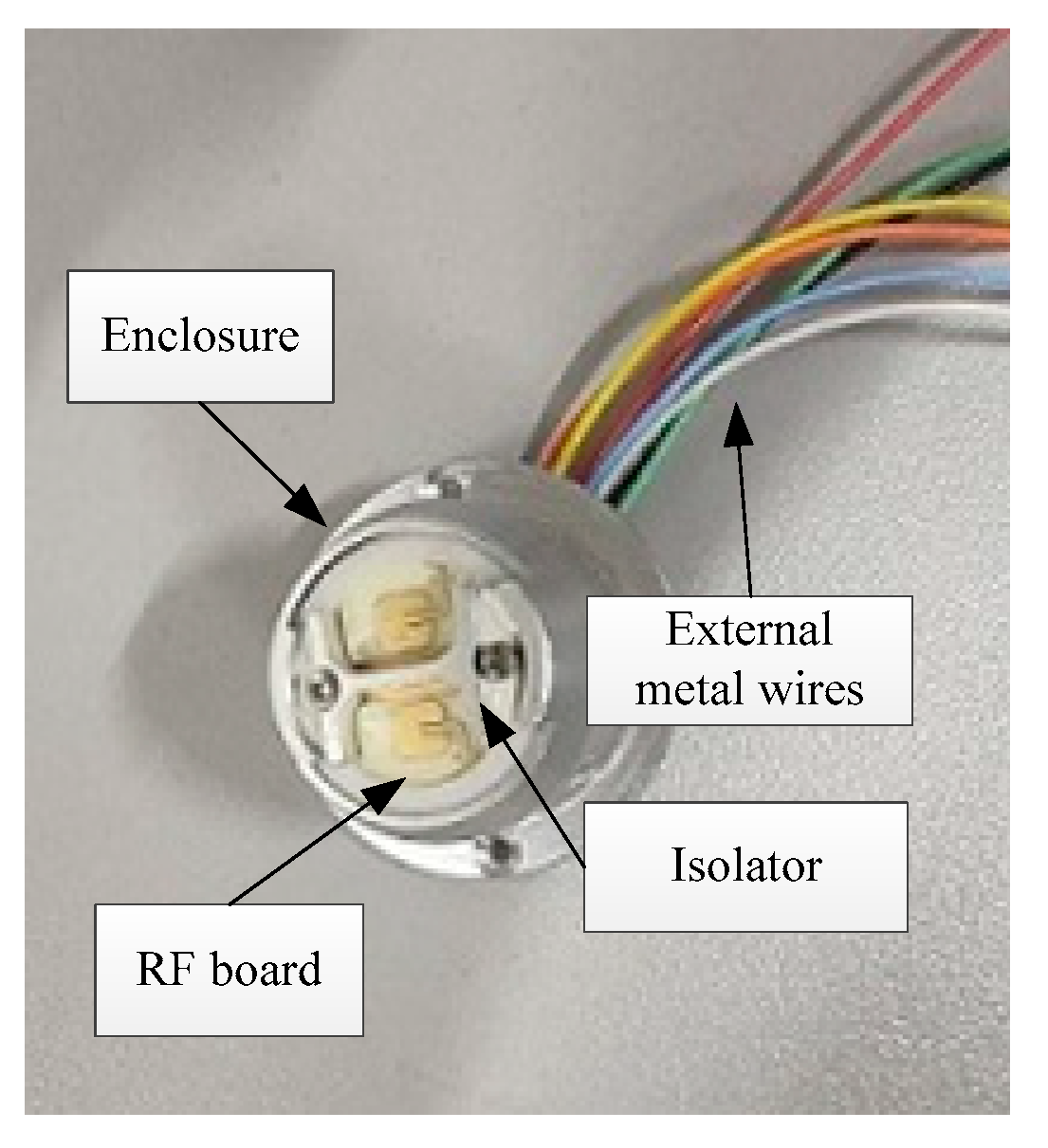
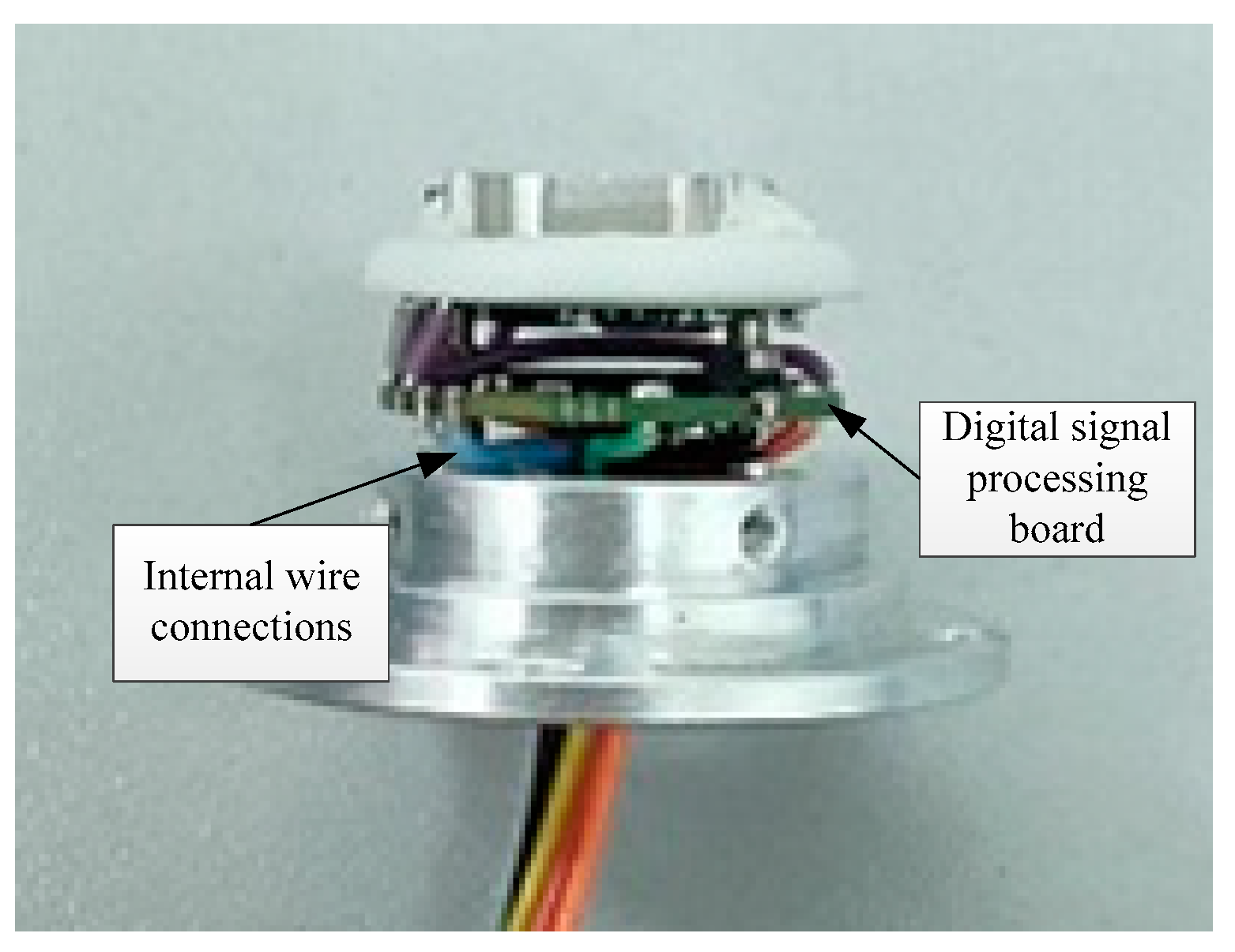

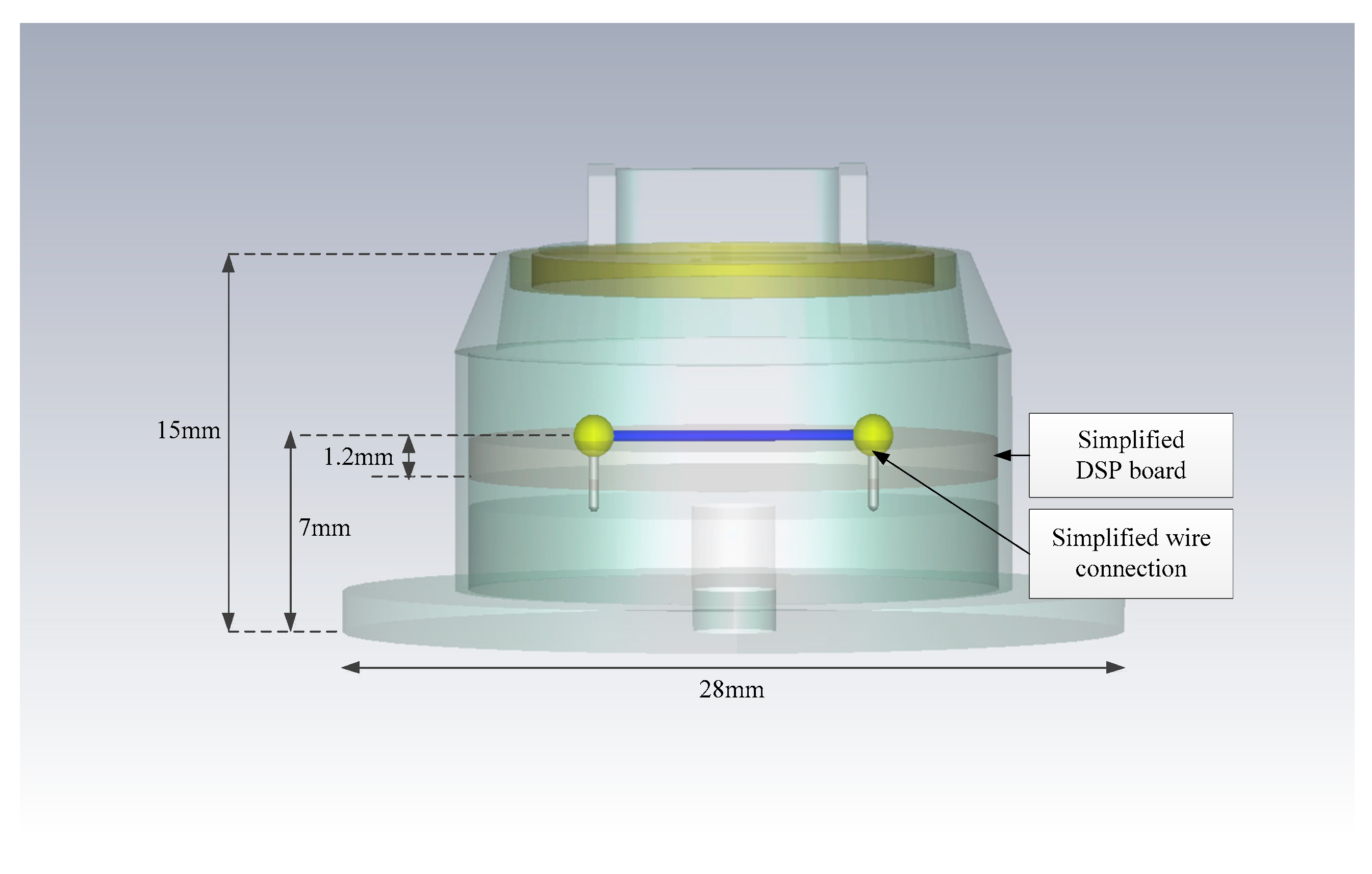

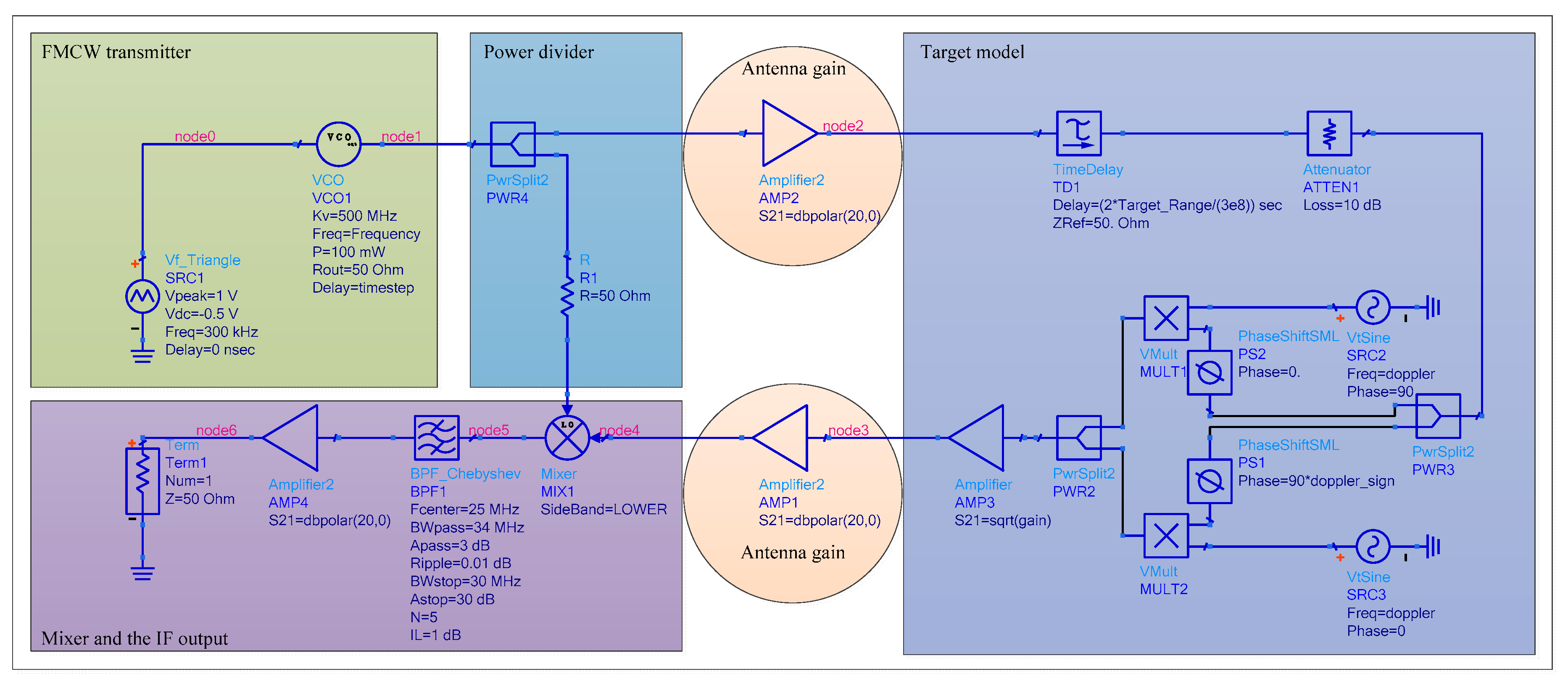
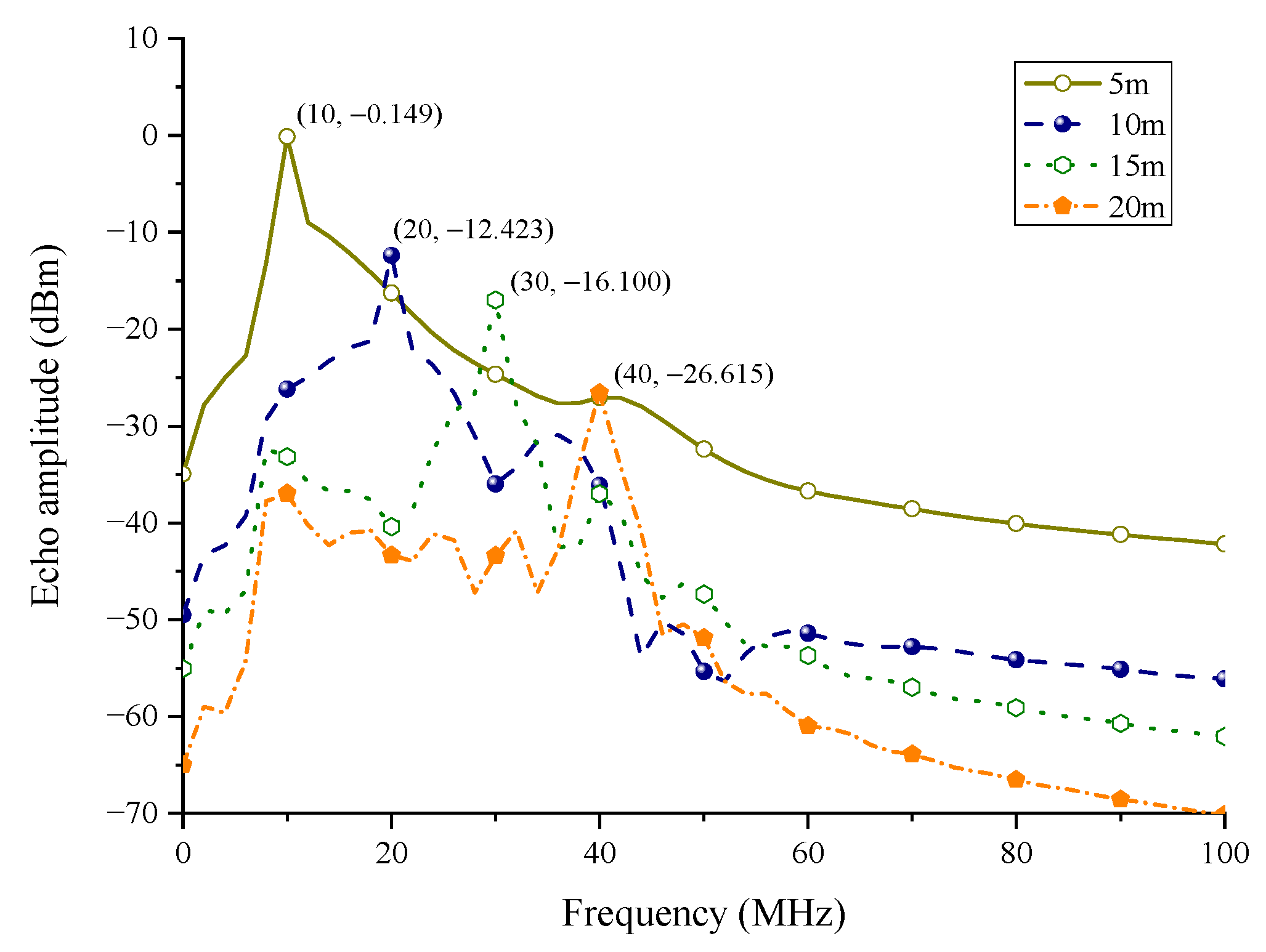
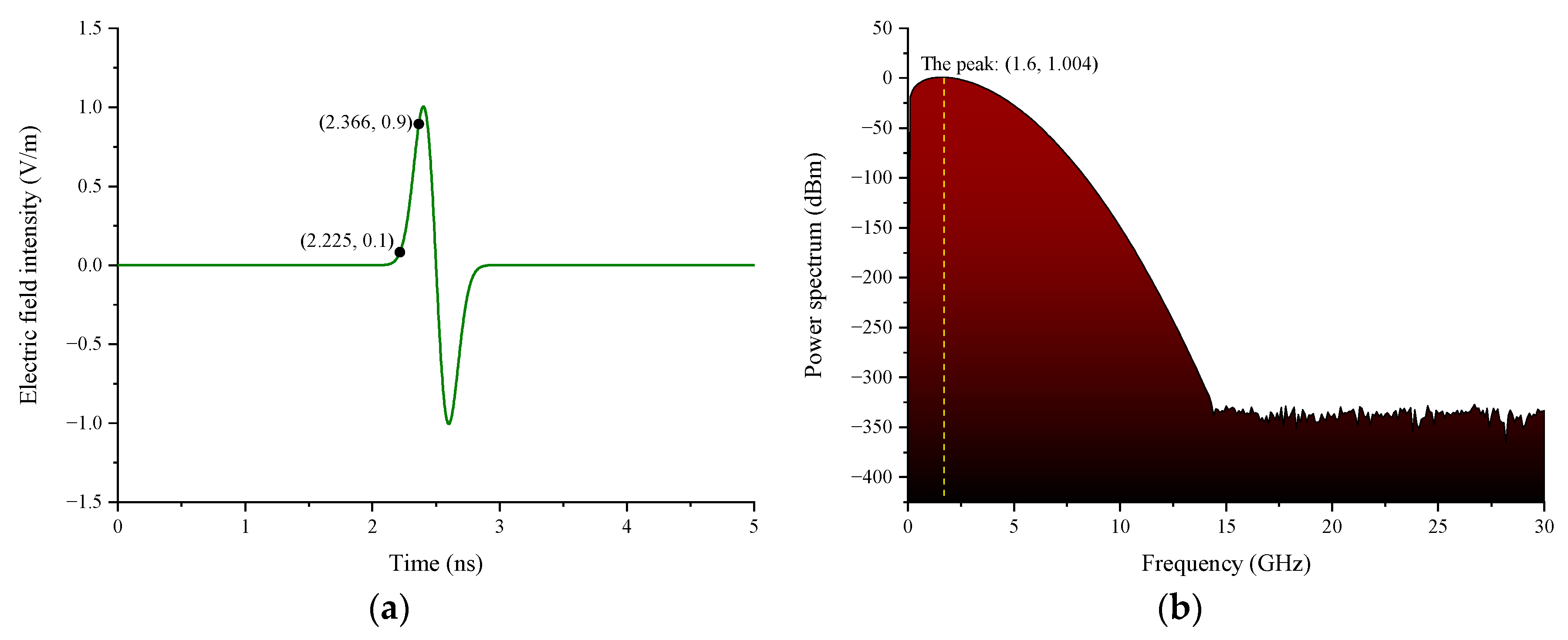
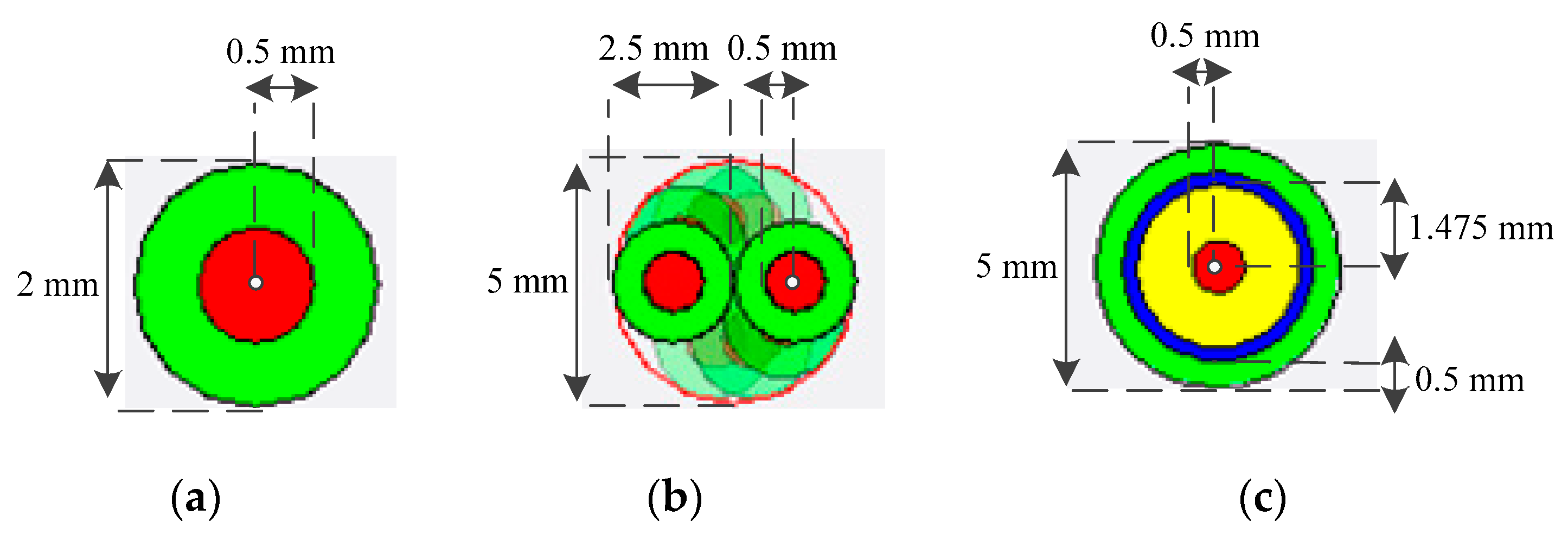
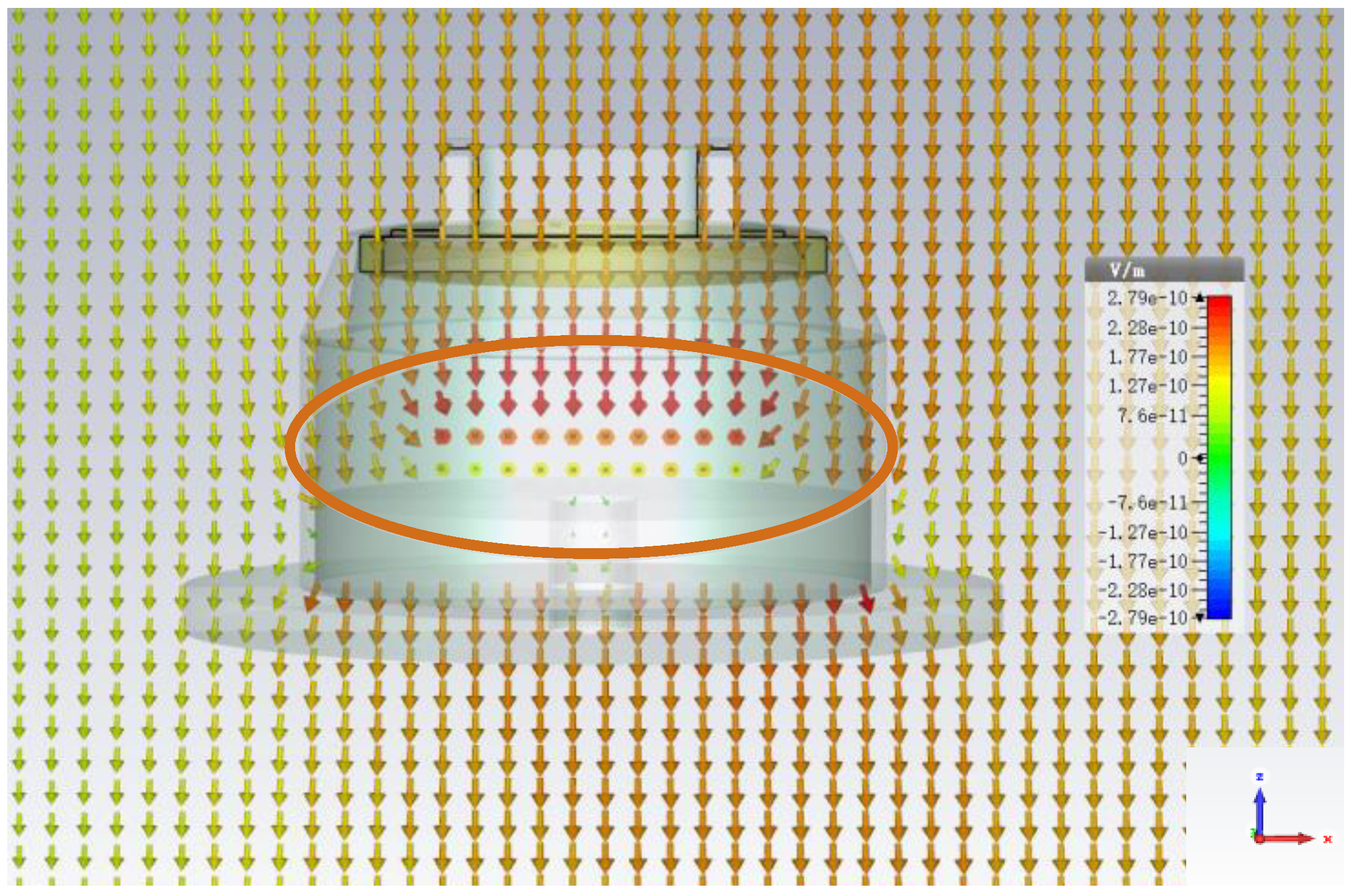
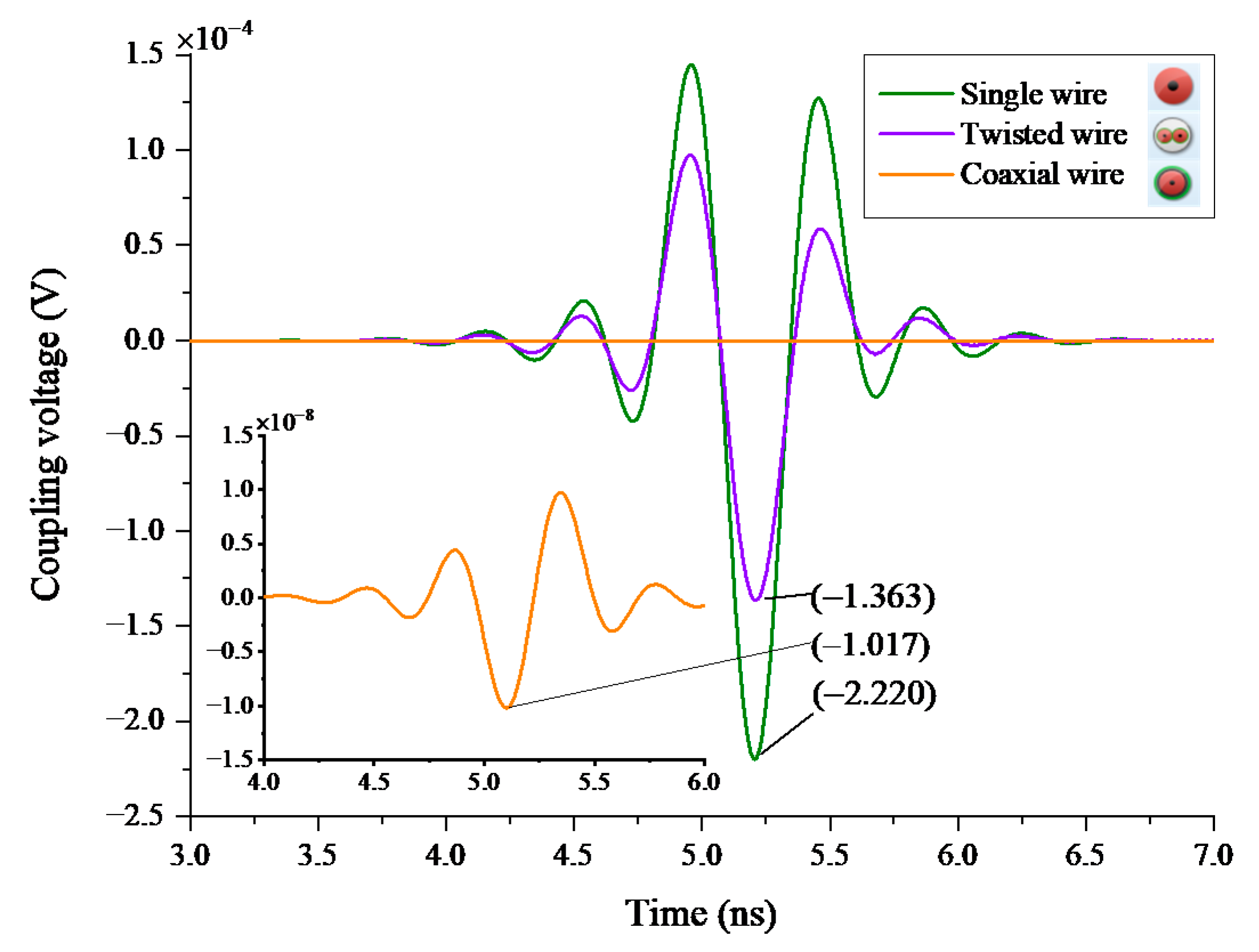

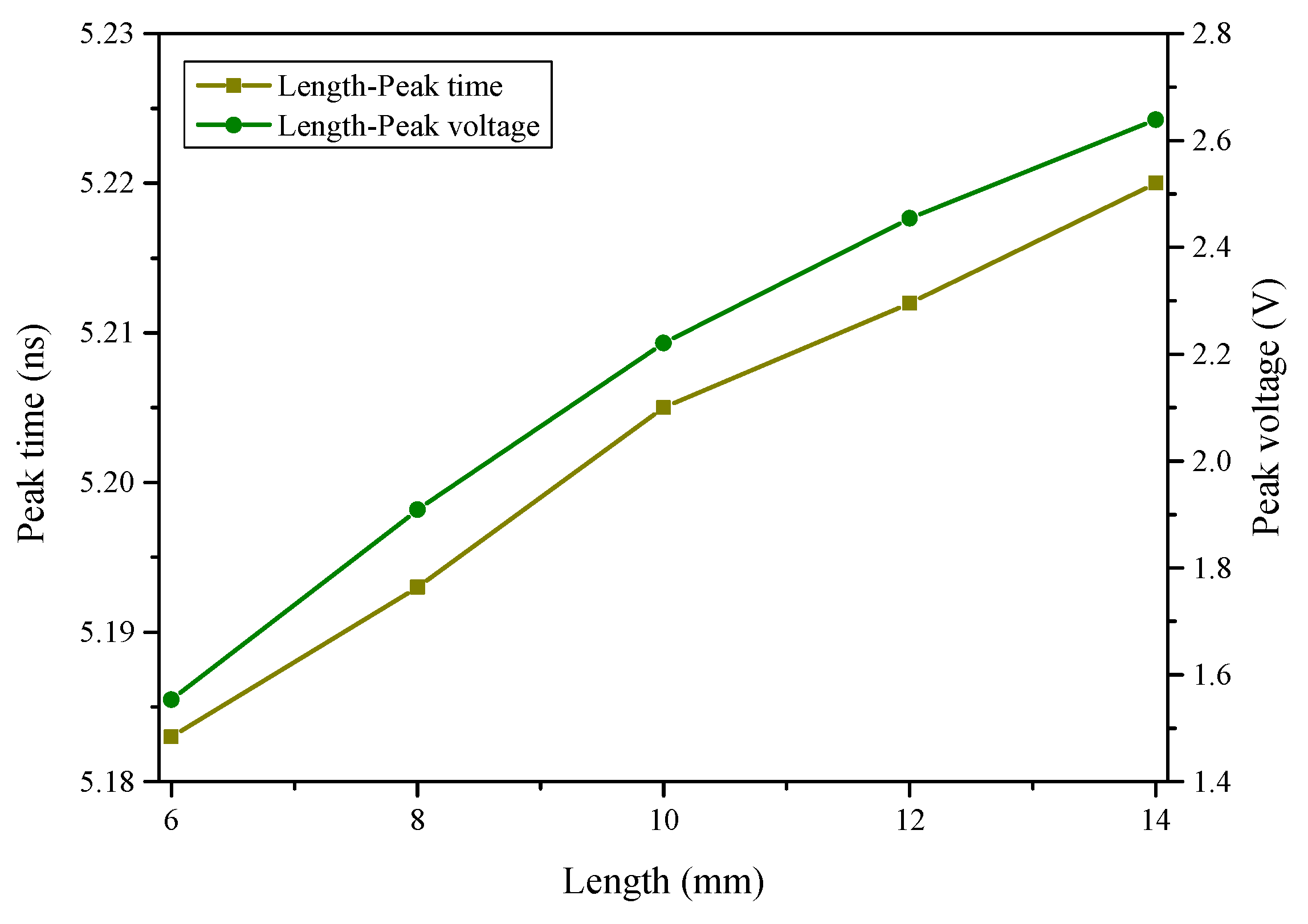
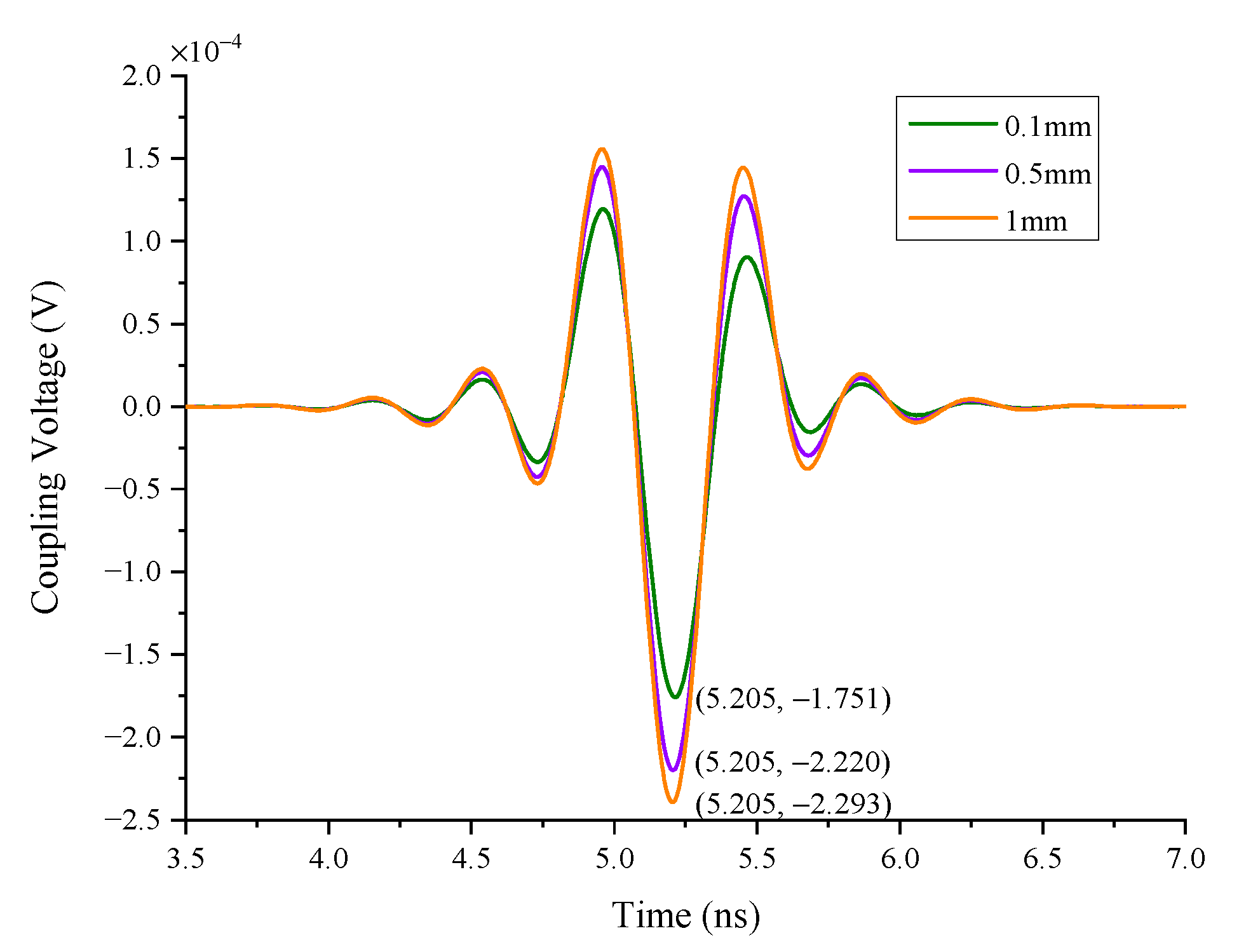
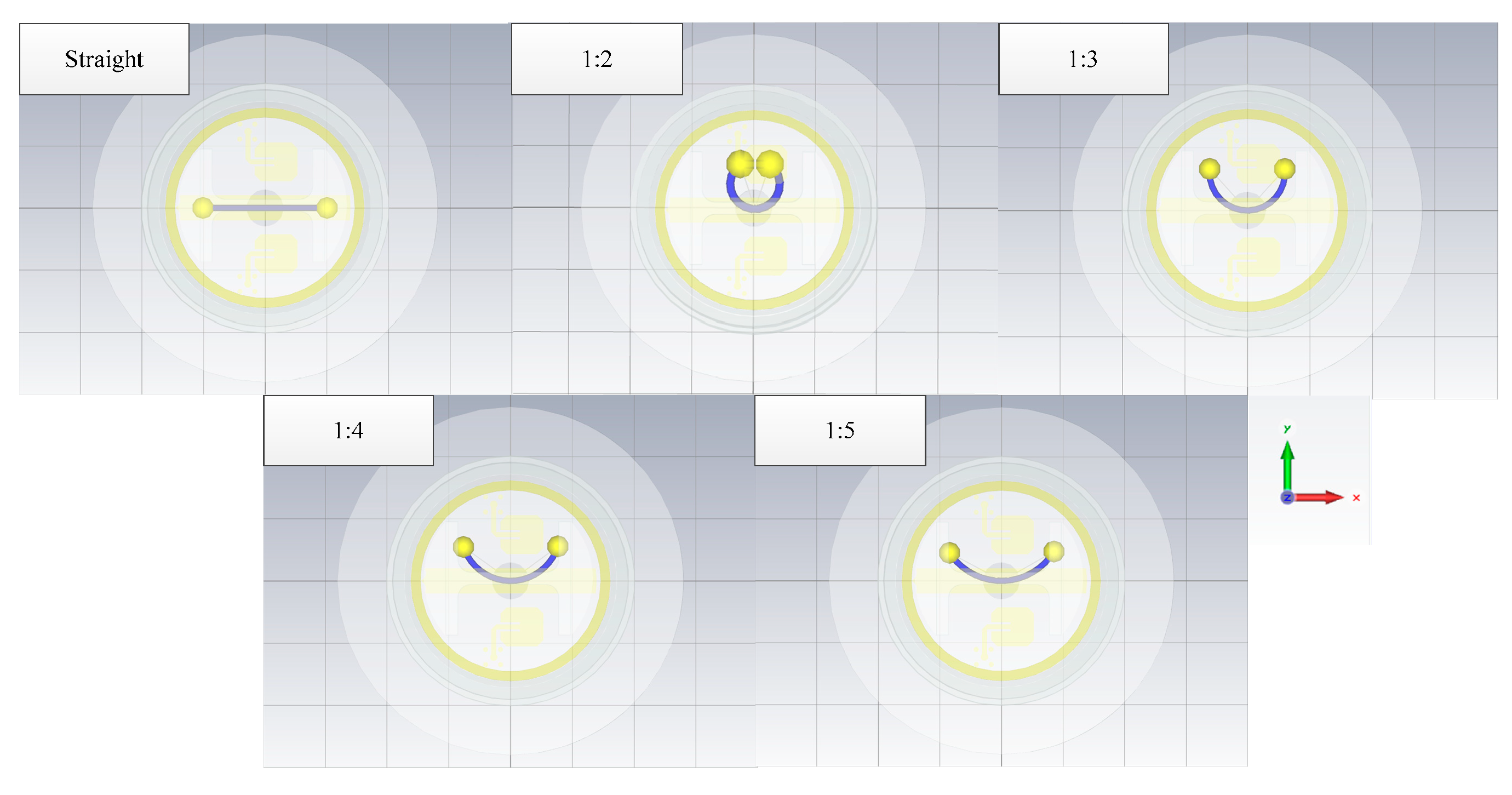
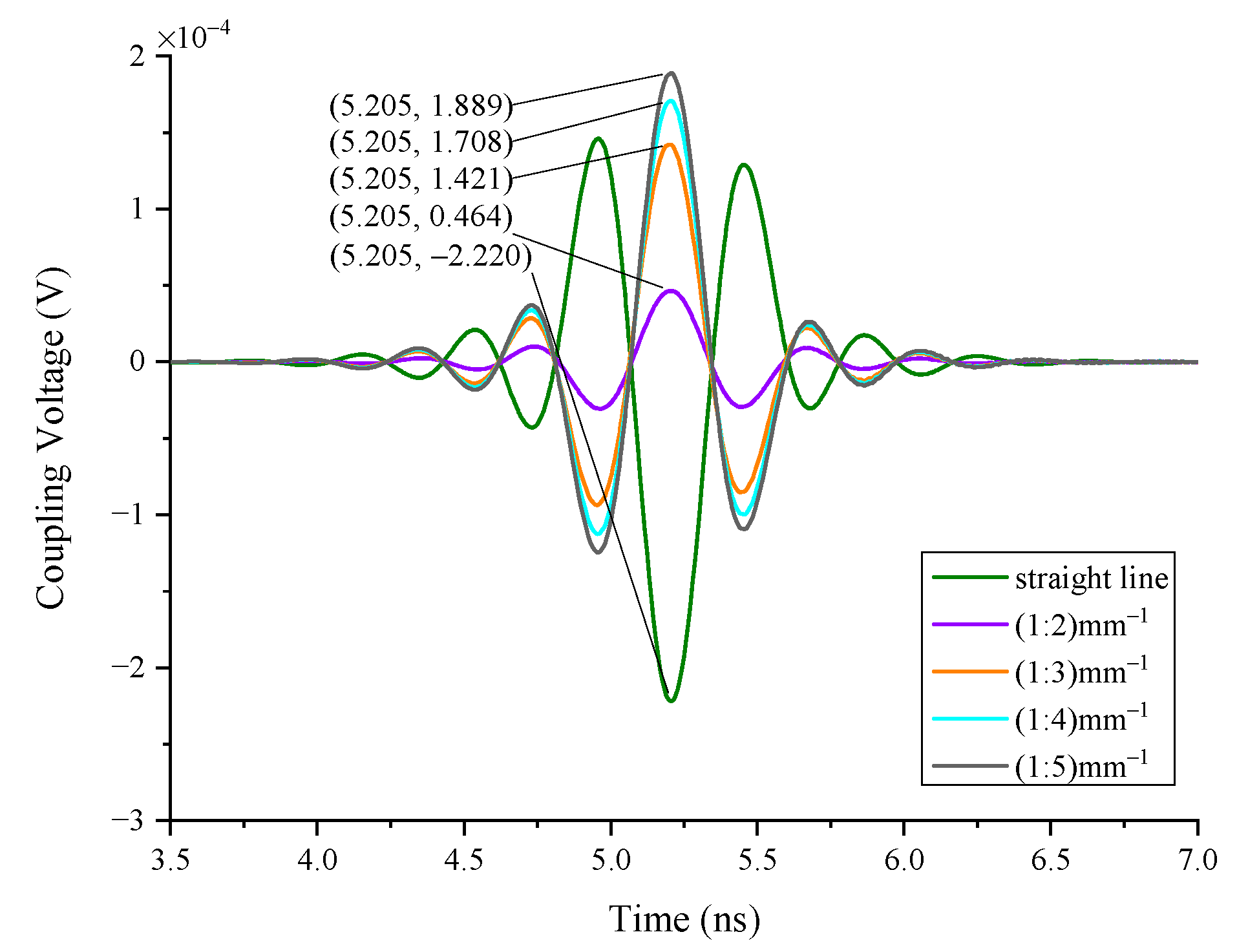


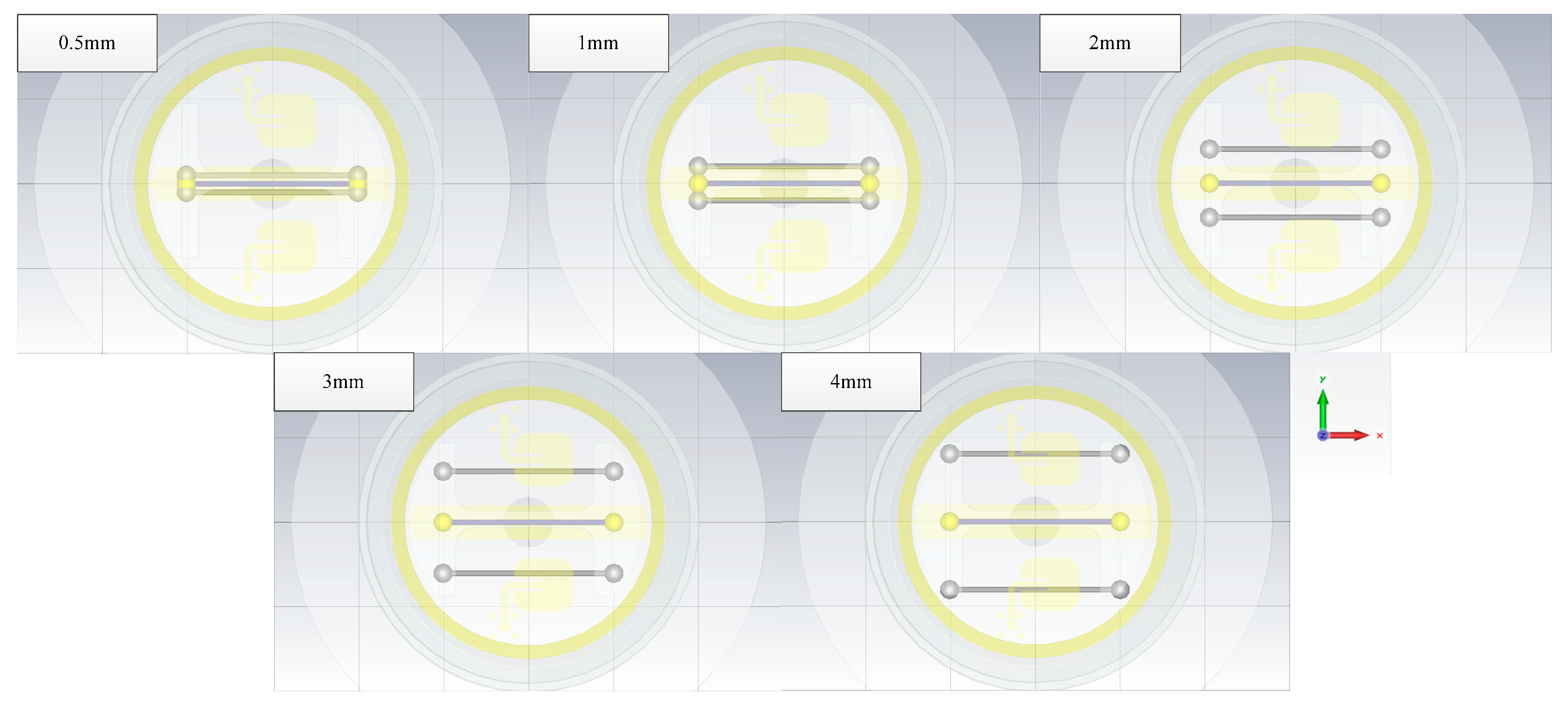


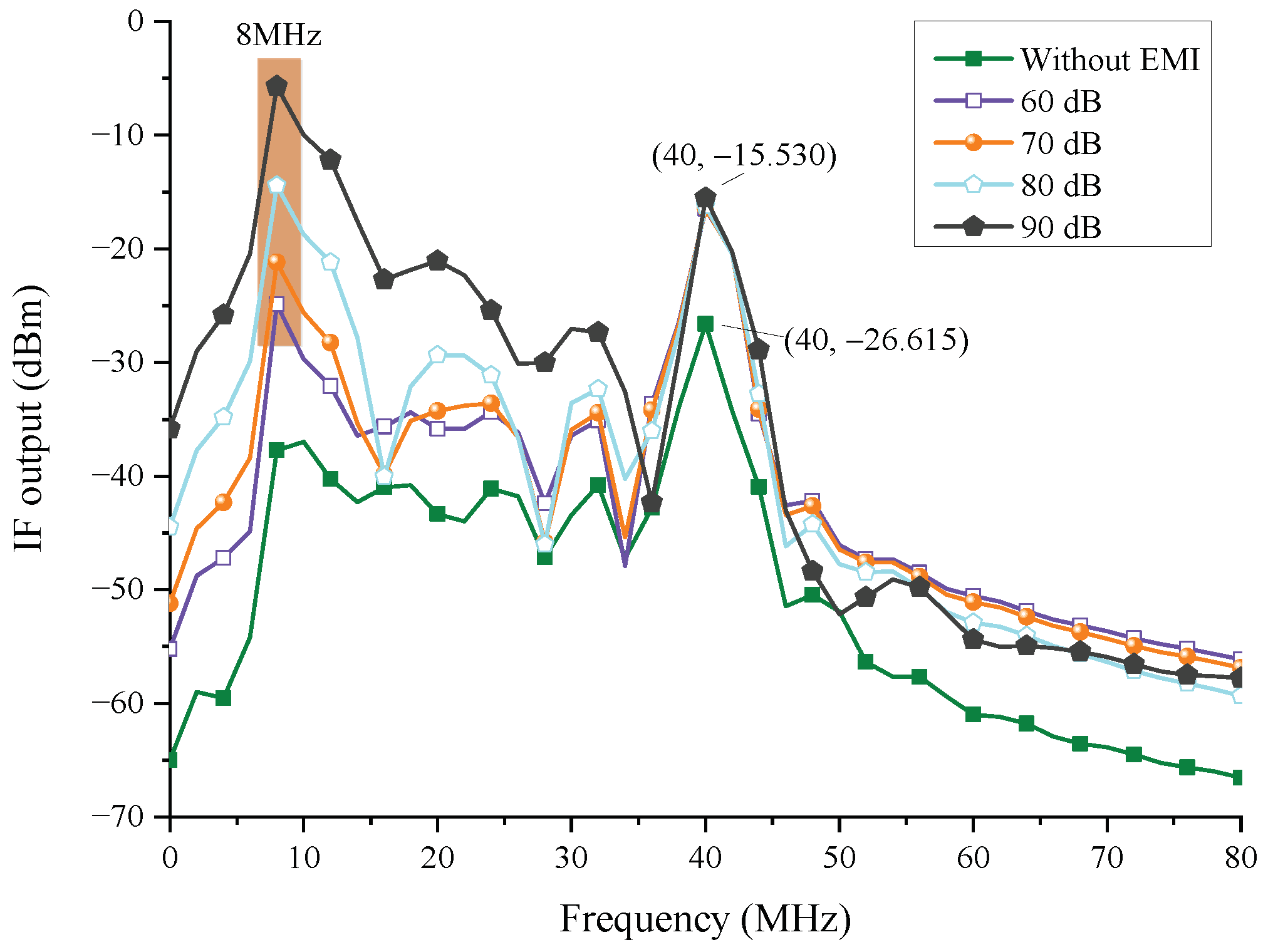
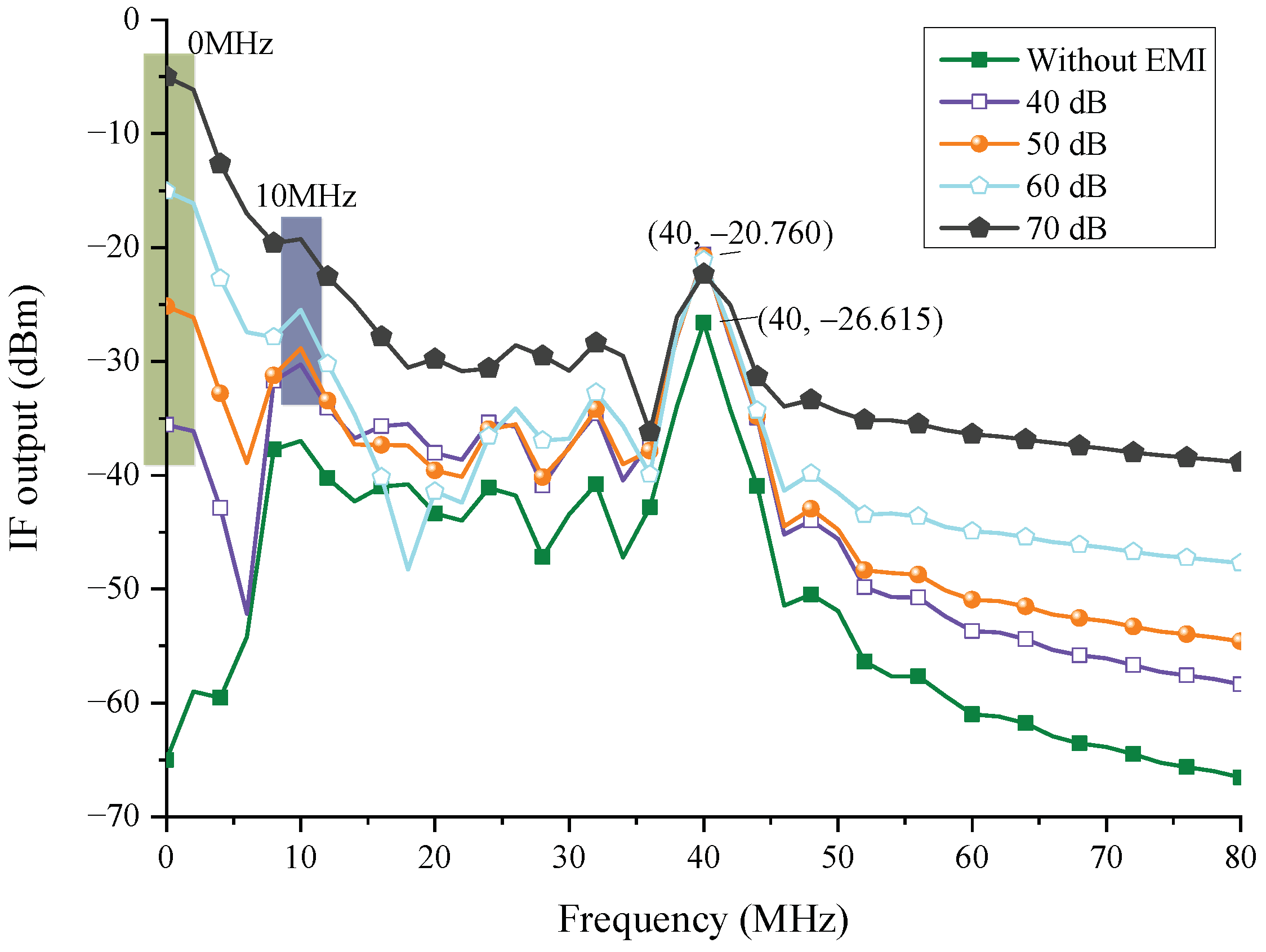
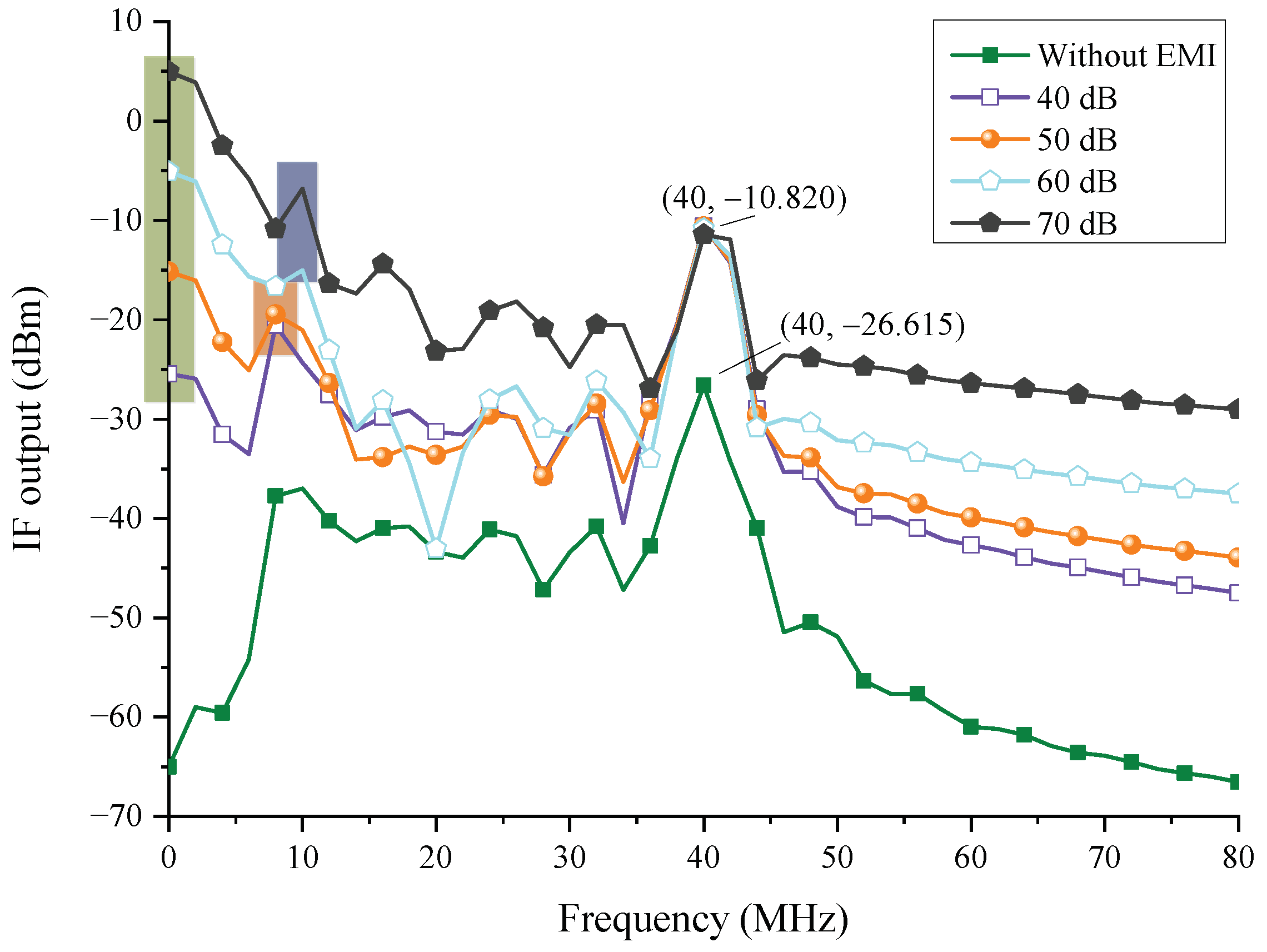
| References | Methods | Models | Disadvantages |
|---|---|---|---|
| [3,4,5] | Hybrid method | The field-circuit model | Incomplete modeling |
| [6,7,8,9] | Analytical method | Ideal enclosure | Unable to handle complex enclosures |
| [12,17] | Numerical method | The actual structure | Unable to handle active circuits |
| [16] | Experiment method | The actual structure | Expensive |
| Transmitter Power | Modulation Frequency | Modulation Bandwidth | Detection Distance | Target RCS | Target Velocity |
|---|---|---|---|---|---|
| 0.1 W | 300 kHz | 500 MHz | 5–20 m | 1 m2 | 30 m/s |
| Case No. | Wire Type | Length (mm) | Radius (mm) | Curvature | Number | Line Spacing (mm) |
|---|---|---|---|---|---|---|
| 1 | single wire/ twisted wire/ coaxial wire | 10 | 0.5 | straight | 1 | / |
| 2 | single wire | 6/8/10/12/14 | 0.5 | straight | 1 | / |
| 3 | single wire | 10 | 0.1/0.5/1 | straight | 1 | / |
| 4 | single wire | 10 | 0.5 | straight/ 1:2/1:3/ 1:4/1:5 | 1 | / |
| 5 | single wire | 10 | 0.5 | straight | 1/2/3/4/5 | 0.5 |
| 6 | single wire | 10 | 0.5 | straight | 3 | 0.5/1/2/3/4 |
| Wire Type | Material of the Conductor | Material of the Insulator Inside | Material of the Insulator Outside | Material of the Screen |
|---|---|---|---|---|
| LYFY-0 qmm50 | Copper | / | Polyvinyl chloride | / |
| LIFY-1 qmm | Copper | / | Polyethylene | / |
| RG-58 | Copper | Polyethylene | Polyvinyl chloride | Copper |
| Target Range/m | A Single Wire/dB | A Coaxial Wire/dB | ||||
|---|---|---|---|---|---|---|
| Node 5 Injection | Node 6 Injection | Two-Point Injection | Node 5 Injection | Node 6 Injection | Two-Point Injection | |
| 5 | 105 | 82 | 88 | 189 | 166 | 172 |
| 10 | 88 | 69 | 75 | 172 | 154 | 159 |
| 15 | 84 | 64 | 71 | 169 | 148 | 155 |
| 20 | 78 | 55 | 65 | 162 | 139 | 149 |
| Target Range/m | Peak Voltage of IF Output/V | ||
|---|---|---|---|
| Node 5 Injection | Node 6 Injection | Two-Point Injection | |
| 5 | 2.478 | 5.541 | 11.500 |
| 10 | 0.469 | 1.241 | 2.474 |
| 15 | 0.304 | 0.697 | 1.561 |
| 20 | 0.144 | 0.248 | 0.782 |
Publisher’s Note: MDPI stays neutral with regard to jurisdictional claims in published maps and institutional affiliations. |
© 2022 by the authors. Licensee MDPI, Basel, Switzerland. This article is an open access article distributed under the terms and conditions of the Creative Commons Attribution (CC BY) license (https://creativecommons.org/licenses/by/4.0/).
Share and Cite
Chen, K.; Liu, S.; Gao, M.; Zhou, X. Simulation and Analysis of an FMCW Radar against the UWB EMP Coupling Responses on the Wires. Sensors 2022, 22, 4641. https://doi.org/10.3390/s22124641
Chen K, Liu S, Gao M, Zhou X. Simulation and Analysis of an FMCW Radar against the UWB EMP Coupling Responses on the Wires. Sensors. 2022; 22(12):4641. https://doi.org/10.3390/s22124641
Chicago/Turabian StyleChen, Kaibai, Shaohua Liu, Min Gao, and Xiaodong Zhou. 2022. "Simulation and Analysis of an FMCW Radar against the UWB EMP Coupling Responses on the Wires" Sensors 22, no. 12: 4641. https://doi.org/10.3390/s22124641
APA StyleChen, K., Liu, S., Gao, M., & Zhou, X. (2022). Simulation and Analysis of an FMCW Radar against the UWB EMP Coupling Responses on the Wires. Sensors, 22(12), 4641. https://doi.org/10.3390/s22124641






